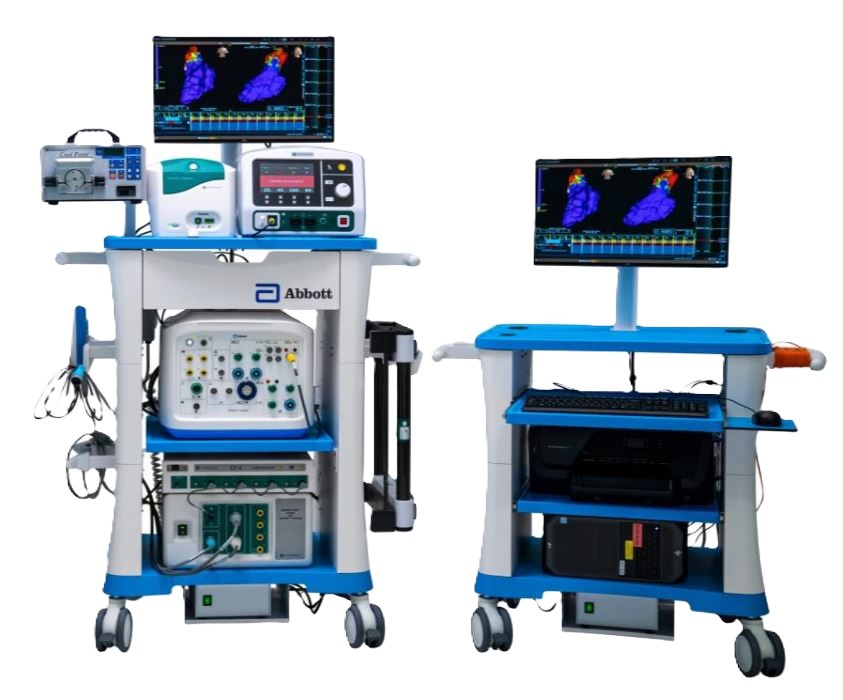Ensite X
Manufacturer: Abbott
Category: Instruments for functional explorations and therapeutic interventions
EMDN: Z12059002 - Cardiac mapping equipment
Who sell it?
- Abbott

No characteristic found
The EnSite X EP System from Abbott is an advanced cardiac mapping system used in electrophysiology (EP) procedures to diagnose and treat heart rhythm disorders like atrial fibrillation (AFib). Here's a description focusing on its pros and USPs: Key Features and USPs: Advanced 3D Mapping: - EnSite X provides highly detailed, real-time 3D anatomical models of the heart, enabling physicians to visualize complex cardiac structures and electrical activity. - This detailed mapping helps to pinpoint the sources of arrhythmias with greater accuracy. Omnipolar Technology: - The system utilizes omnipolar technology, which allows for simultaneous visualization of electrical signals from multiple directions. This enhances the ability to identify and characterize complex arrhythmias. - This technology is a major advancement over older systems. Enhanced Visualization and Navigation: - EnSite X offers intuitive visualization tools and navigation features, facilitating precise catheter placement and ablation. - The system has been designed to be very user friendly. Integration with Other Technologies: - The system can integrate with other EP technologies, such as intracardiac echocardiography (ICE) and fluoroscopy, providing a comprehensive view of the heart. Reduced Fluoroscopy Time: - The advanced mapping capabilities of EnSite X can help reduce the need for fluoroscopy, minimizing radiation exposure for both patients and physicians. Increased Efficiency: - The system allows for faster and more efficient procedures, which can lead to reduced procedure times. Improved Accuracy: - The Omnipolar technology, and the 3D mapping, greatly improve the accuracy of finding the problem areas of the heart. In essence, the EnSite X EP System empowers electrophysiologists with advanced mapping and visualization capabilities, leading to more accurate diagnoses, efficient procedures, and improved outcomes for patients with heart rhythm disorders.